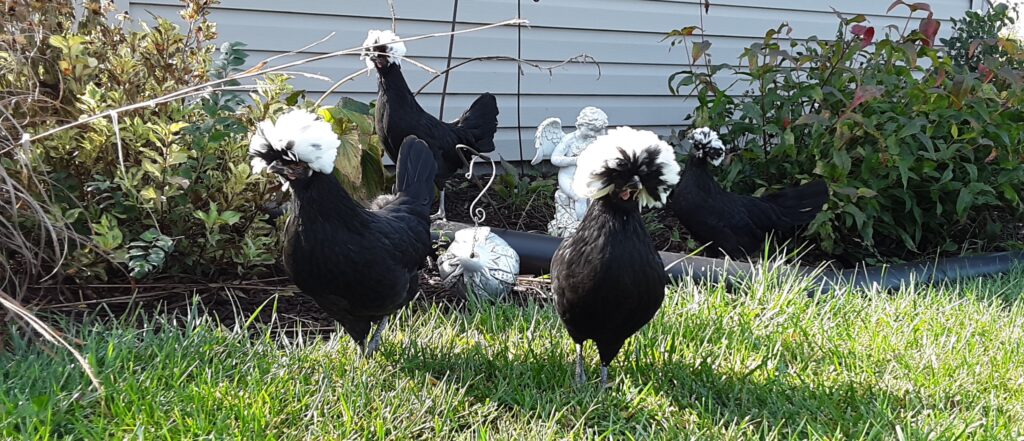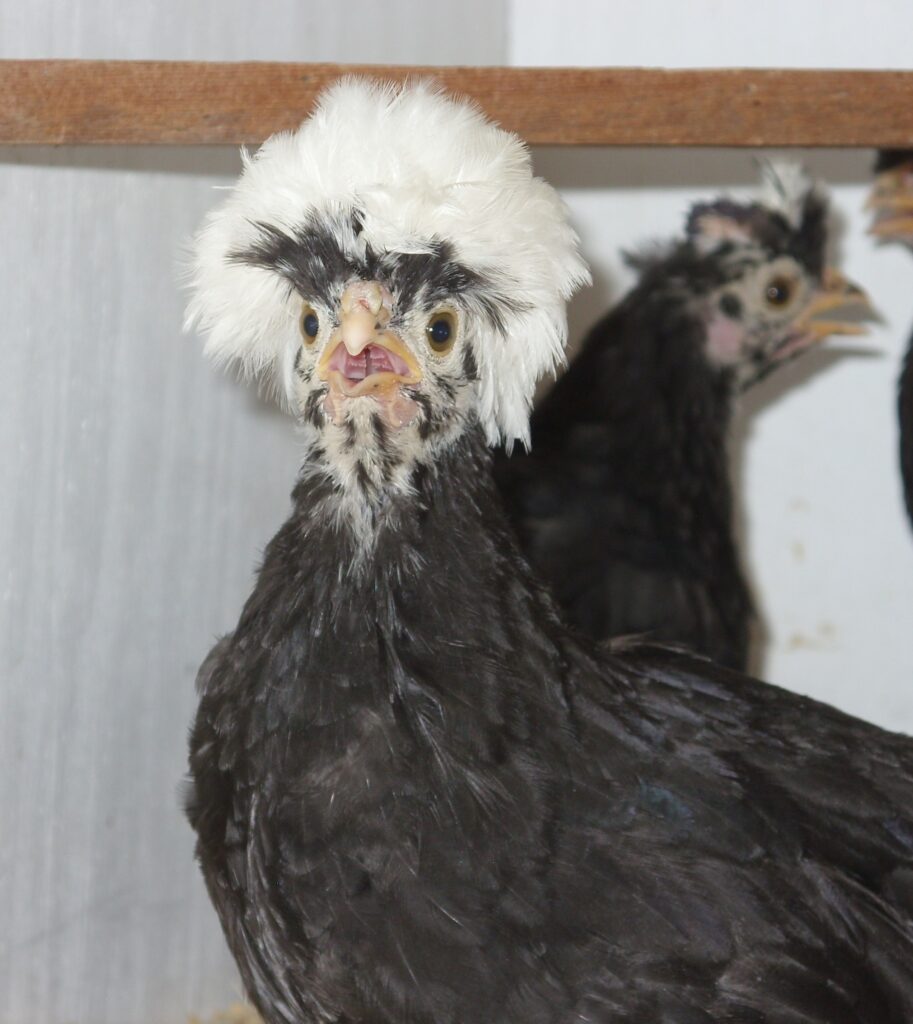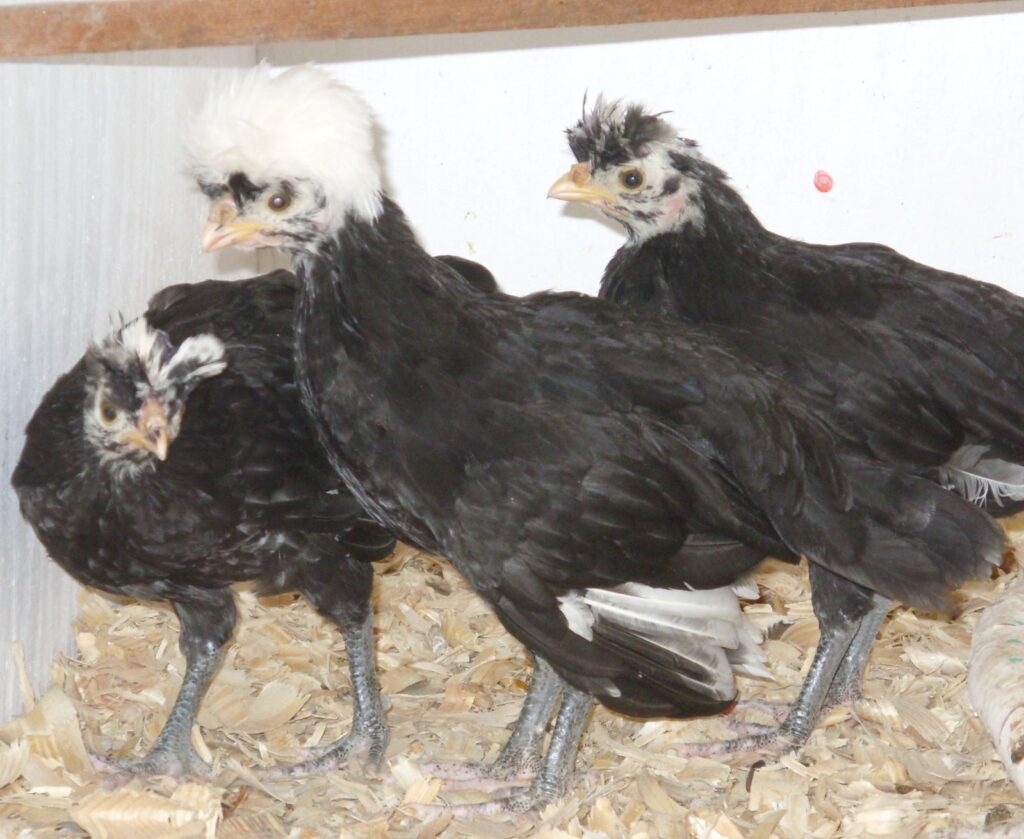On a Sunday trip to a local farm supply store, I stumbled upon a bin of White-crested Polish hens. Since there were only 5, I took them all. I thought I was well-versed in chicken keeping, but there is always a little more to learn – especially when keeping Polish hens. With their unique crest and outgoing personality, Polish are a favorite of backyard chicken keepers looking for a unique but tame breed.
The Polish are an ancient breed of poultry, but their specific origins are uncertain. Crested birds have been around for centuries, and are thought to originally descend from the Netherlands, where it was declared a thoroughbred in the 16th century. The first poultry show in London in 1845 had a Polish entry, where it attained breed classification. They could have originated in Poland, hence the name, but that’s unclear. But crested poultry appeared in paintings as early as the 15th century. Dutch and Italian artists portrayed their likeness from the 16th to 18th centuries, so they’ve been around a looong time.
Characteristics of Polish Breed
Polish are a small bird, with males reaching about 6 pounds and females around 4 ½ pounds. They have a tall, upright stance, slender trunk, but it’s the crested head that draws attention. Covering the small v-shaped comb, the bouffant crest feathers fan out from the head, sometimes covering the entire face, with only their little beak visible. While the male’s crest is spikey, the female’s has a more rounded appearance.
The White-crested, black-bodied Polish are the most common variety, but other color varieties include gold, chamois, blue-laced, and splashed — which is a blue-grey combination of coloring. All make terrific show birds for 4-H kids.
Egg Laying and Polish Hens
Polish hens will lay small white eggs. They’re not prolific layers like other breeds, but you should get 2 or 3 a week. Luckily (for some) they don’t often — if ever — go broody. That’s an advantage if you’re like me and don’t intend to raise chicks. Otherwise, they don’t make great mothers so you might have to incubate if you hope to add to your flock.
I’ve had my Polish almost 4 months, and so far they’re not laying. They don’t start laying until about 6 to 8 months. With winter fast approaching, it might be longer, as I don’t light my coop.
Behavior
For chicken enthusiasts looking for a docile breed that’s good with small kids, the Polish are a good choice. They aren’t likely to get too pecky, and have a gentle nature. They are a little excitable, but that’s due to their vision limitations. Since they can’t see well with all those feathers covering their eyes, they are a bit jumpy. They have to constantly be on guard for predators, so loud noises will frighten them more than a normal breed that doesn’t have obstructed vision.
If you raise Polish for small kids, handle them early and often while they can easily see you. Talk to your young chicks so they become familiar with the sound of your voice. As they grow, they won’t be as jumpy if they’re familiar with their keepers.
They do like to have room to roam, so try to have a run space to accommodate their need to run and fly. I let mine out during the day, and they immediately fly and run like they’ve been let out of jail, but stay close to home. Polish also like to fly up high and sit high up on perches, so have enough roosts at different heights.
Special Concerns with Polish Breed

The girls playing in the garden. This breeds loves to roam, so make sure they have some yard playtime.
Unfortunately, Polish chickens don’t tolerate cold temps well. Their head feathers don’t insulate like other breeds, so they are prone to hypothermia. I’m in Nebraska where winters can be brutal, so I’m planning on bringing them into the heated garage when temps dip below freezing. This is one instance where you might consider heating your coop.
I’m lucky that I had an empty coop so I could move my girls right in. They are not housed with the rest of my flock. Integrating this unique breed can cause problems, as bigger chickens are likely to peck on any newbies that look radically different. If you must house Polish with your regular flock, plan on a lot of time with the integration process and prepare lots of hiding places to take cover.
I’m looking forward to seeing them fully mature and start laying. So far, they’ve been little work, and chicken tv is much more entertaining with the Polish chicken breed.


